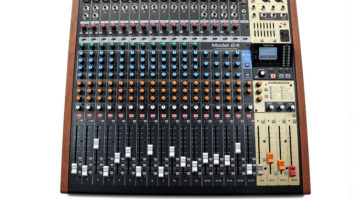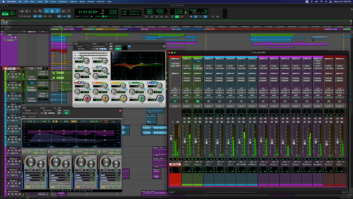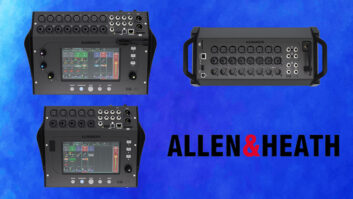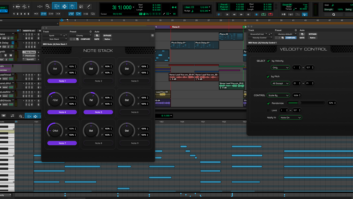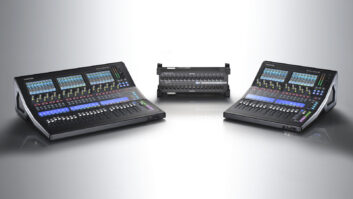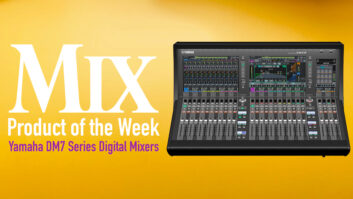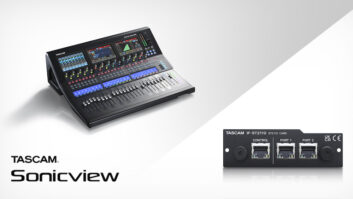
Tascam’s DM-24 is a popular digital mixer with good reason: It sports a large amount of I/O and with its superflexible signal routing, onboard effects, automation, machine control and ability to serve as a control surface for DAWs, it makes an excellent centerpiece in a sophisticated studio. There are a handful of applications that may not be immediately obvious to someone who has simply used it as a plain-vanilla mixer. If you’re hoping to squeeze even more functionality out of your DM-24, here are some ideas to play with.
PATCHBAY AND SIGNAL ROUTING
When I first acquired my DM-24, I hooked it up to pretty much every device in my studio and found it to be everything I wanted in a mixer. One day, I needed to do a transfer from DAT into Pro Tools. I dialed up the appropriate signal flow in the DM-24’s I/O section, saved it as a preset (almost as an afterthought) and did my transfer. Over time, I did various other transfers: 16-track analog to DTRS and vice versa, and 2-track analog masters to the computer. Each time I saved the routing as a preset. Then it hit me: I wasn’t grabbing patch cables to do transfers. I was simply recalling presets much easier than making 16 or more patches at a time. Bottom line, the DM-24 makes an excellent central patchbay/signal routing device.
THE INS AND OUTS
The DM-24 has a boatload of I/O and initially appears to be a perfect mixer for 24-track projects. After further examination, I found that you can take it a lot further than that. Tascam’s version 2.0 firmware for the console introduced a new preset called 48-CH Mixing. In this configuration, TDIF inputs 1, 2 and 3 are assigned to channels 1 through 24 (tape returns). The additional eight channels (of the total 32) are assigned to handle two internal effects processors, a digital stereo input and two channels of external send and return.
Additionally, the 16 analog inputs are assigned directly to the stereo bus. This is perfect for a scenario in which you have 24 tracks of drums, bass, guitars and vocals and you want to mix in sequenced synths, samplers or drum machines. And considering the DSP capabilities of many contemporary synths and samplers, you may be able to achieve the EQ, dynamics and effects processing necessary for your mix. Even with vintage synths, you can use outboard EQ and dynamics in the channel inserts to get them in the mix the way that you want. You could actually get 16 more tape tracks into your mix this way, as well. Either way, having 16 inputs more than what is apparent is nice.
SWEET PLUG-IN SUITE
The DM-24 comes loaded with a nice suite of effects from Tascam, which are nothing to sneeze at, but the real effects power resides in the console’s TC Works effects and Antares mic and speaker modeling. There are 127 Tascam effects presets, including compression, distortion, exciters, de-essers, phasers, delays, chorusing, pitch shifting and flanging. The 100 TC Works presets are high-quality reverbs of all varieties. The Antares presets allow you to emulate a large variety of mics and speakers.
I have been known to process signals through the DM-24 and re-record them back to another track, particularly the distortion and modeling effects. It’s incredibly easy to do, considering that my DM-24 serves as the central patchbay/signal routing hub for my entire studio. I simply route the signal through the effect and record it back (not unlike re-amping). The DM-24 provides access to effects that you may not have available elsewhere, so why not use them?
BEYOND THE BASICS
The DM-24 emulates Mackie’s HUI control surface so you can control your DAW. Even if you’re not emulating the HUI, the unit sends MTC, which can be used to sync your DAW with any tape tracks you’re mixing. Also, there are MIDI continuous controller layers that allow you to control MIDI devices. And just in case you didn’t know it, pressing the Second Function key while selecting a channel automatically brings it to unity gain. Similarly, holding this key while pressing an EQ band key flattens that band, setting its gain to zero.
DON’T FORGET THE UPDATE
Because the DM-24 is software-based, product development continued after the mixer launched. Check to make sure your DM-24 is at the latest version, which is revision 2.1. In addition to addressing some minor bug fixes, V. 2.1 adds a number of slick features, including expanded bus assignment flexibility, improved mic/line talkback source routing, S/MUX 96kHz interfacing and additional HUI emulation functionality. Best of all, the software update is a free download from www.tascam.com/Products/DM-24.html.
GO FURTHER
The DM-24 is incredibly powerful in terms of signal routing and external control, and I doubt most users have delved into the deeper features. Take some time to get experimental and push your console. I bet that there are quite a few ways you can smooth out and speed up your work with a little digging.
John McJunkin is the principal of Avalon Audio Services in Phoenix.
